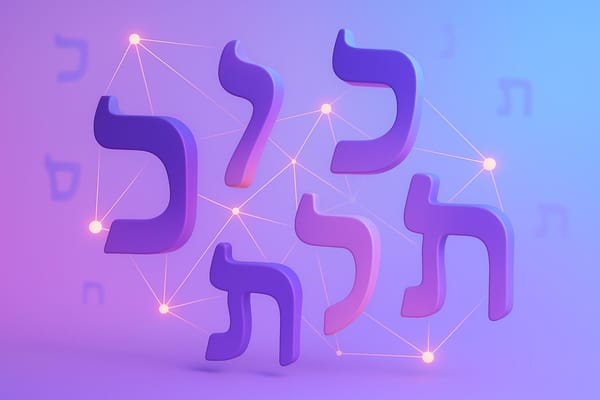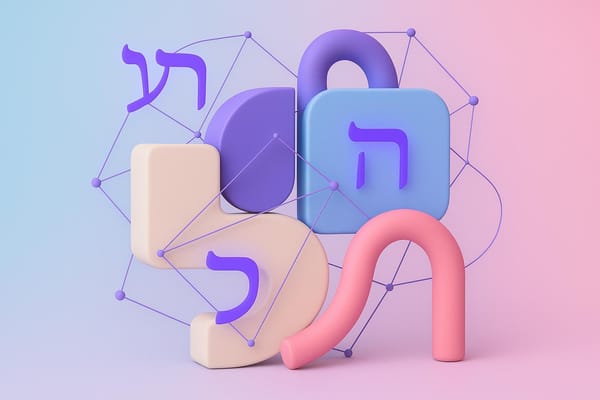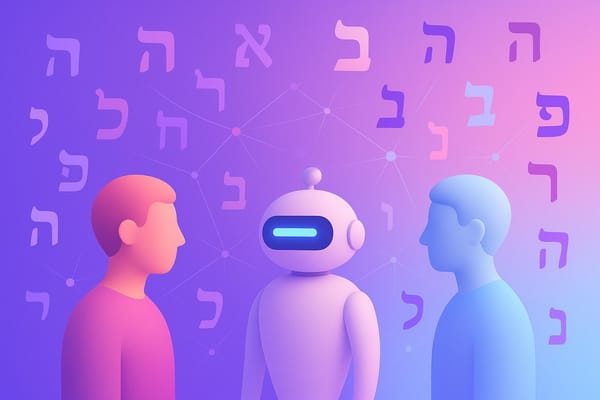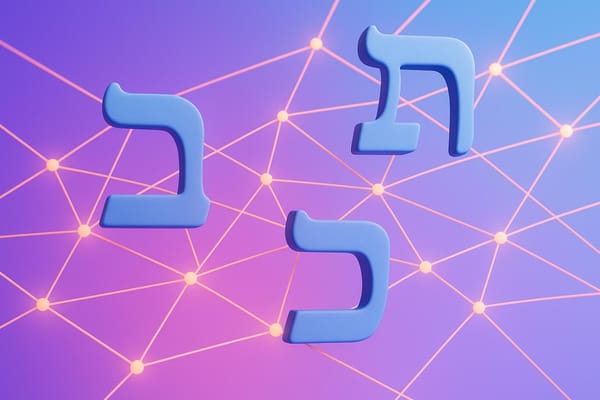Gender in Hebrew AI: Key Challenges
Explore the complexities of gender in Hebrew AI, from grammar rules to inclusive language support, and the challenges faced by translation systems.
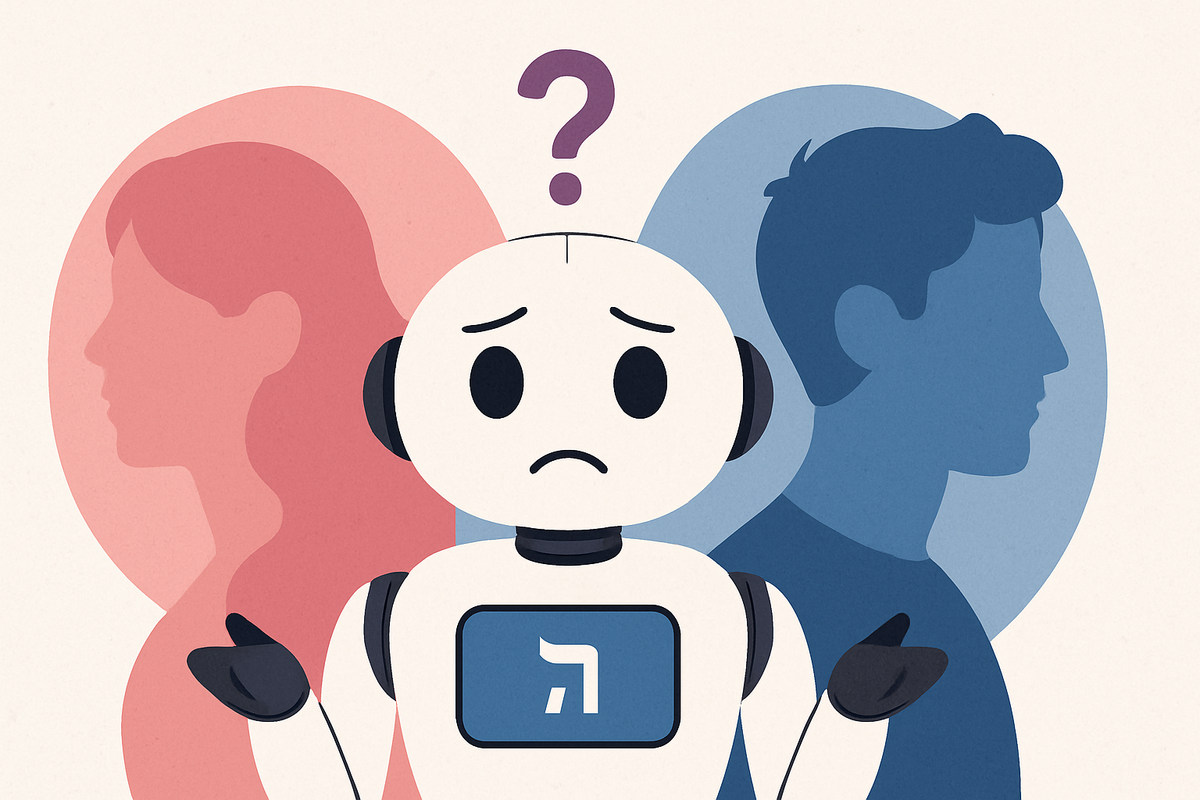
Hebrew AI faces unique challenges due to gendered grammar rules. Unlike English, Hebrew requires gender agreement across verbs, adjectives, and even numbers. For example, "I am happy" translates to "אני שמח" (ani same'ach) for males and "אני שמחה" (ani sme'cha) for females. Modern Hebrew also incorporates gender-neutral expressions, adding further complexity.
Key Points:
- Gender Agreement: Hebrew sentences must align with the speaker's gender.
- Context Sensitivity: AI must adapt to formal/informal settings and cultural norms.
- Non-Binary Support: Modern Hebrew includes inclusive language options.
- Challenges: Detecting implied gender and managing group conversations.
baba - Smart Hebrew Translation addresses these issues with context-aware AI that ensures accurate, gender-consistent translations. It supports non-binary expressions and adjusts language for professional and casual settings. However, it still faces challenges in complex sentences and fast-paced scenarios.
Want to learn more? Visit www.itsbaba.com.
1. baba - Smart Hebrew Translation
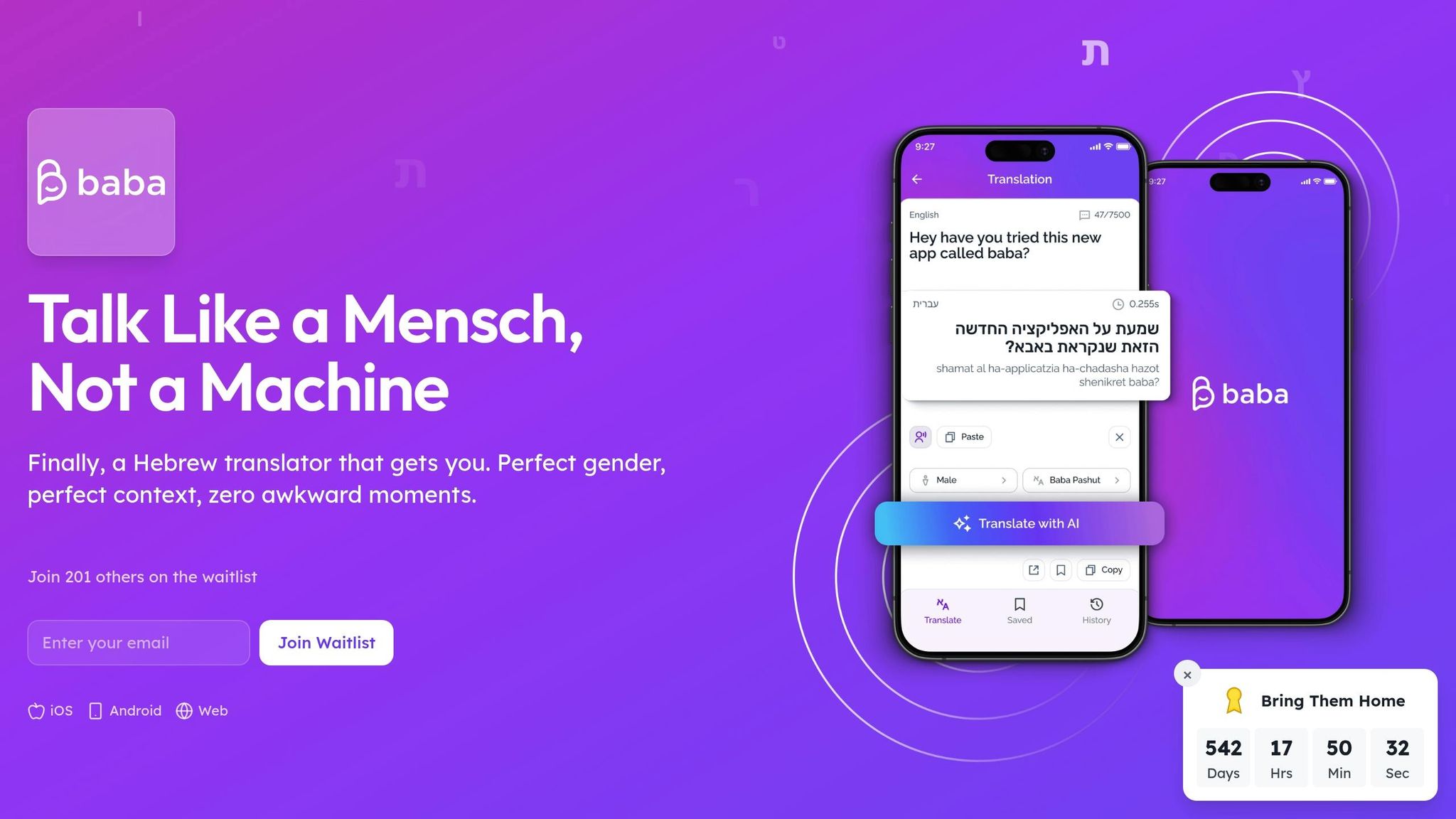
Gender Detection Systems
baba tackles the unique challenges of Hebrew grammar by addressing gender-specific language rules. It identifies the gender of both the speaker and the recipient using a mix of contextual analysis and user input. This ensures translations stay grammatically correct, whether you're in a business meeting or having a casual conversation.
Key features of baba's gender detection include:
- Real-time adjustments for verbs, adjectives, and pronouns
- Consistent adjective agreement tailored to the conversation
These tools work alongside baba's broader focus on understanding context.
Context Recognition
Understanding context is at the heart of baba's gender-aware translation system. The platform evaluates multiple factors to produce translations that fit the situation:
- Whether the communication is formal or informal
- Workplace-specific language needs
- Cultural subtleties important to Hebrew speakers
- Time-related context, such as verb tense and gender alignment
For business communications, baba fine-tunes translations to match professional norms, ensuring presentations and negotiations are both accurate and appropriately polished.
In addition, baba reflects modern language trends by accommodating non-binary expressions.
Non-Binary Language Support
baba recognizes the changing landscape of Hebrew and includes options for non-binary language. This helps users embrace inclusive communication by:
- Offering gender-neutral options for different scenarios
- Supporting modern Hebrew expressions that are inclusive
- Allowing flexibility in how gender is expressed
- Maintaining grammatical correctness while respecting individual identities
This approach helps users stay true to their style of communication while meeting the demands of Hebrew grammar. It bridges the gap between traditional language rules and the needs of modern, inclusive expression.
Sign up for the mobile app waitlist at www.itsbaba.com
Introduction to Hebrew Adjectives: gender and number
Strengths and Limitations
baba is highly effective in handling Hebrew gender processing but still has room to grow in certain areas. Let’s break down its key strengths and where it could improve.
| Capability Area | Strengths | Areas for Improvement |
|---|---|---|
| Gender Detection | • Real-time gender recognition for both speaker and recipient • Accurate verb and adjective agreement • Handles formal and informal contexts well |
• Better detection of implied gender in complex sentences • Faster processing in group conversations |
| Professional Use | • Adjusts language for business settings • Context-aware formality levels • Recognizes cultural nuances |
• Broader industry-specific terminology • Improved handling of honorifics |
| Non-Binary Support | • Provides gender-neutral language options • Includes modern Hebrew expressions |
• Expanding inclusive language patterns • More natural-sounding alternatives |
This analysis highlights some of the unique linguistic hurdles involved in Hebrew AI translation. baba is particularly strong at keeping grammar accurate while adapting to different communication styles and contexts. For instance, in workplace settings, it can automatically adjust pronouns and verbs to reflect hierarchy and formality.
However, baba faces challenges in fast-paced, multi-speaker conversations. Processing speed slows down in mixed-gender or group scenarios. Its non-binary language options are a step forward, but as modern Hebrew continues to evolve, further refinements will be essential.
Want early access to our mobile app? Join the waitlist at www.itsbaba.com.
Next Steps
Hebrew AI is on the verge of reshaping how gender-aware language is processed. To prepare for 2025, developers and organizations should concentrate on these priorities:
-
Improving Gender Recognition
- Strengthen contextual understanding for complex sentences.
- Boost processing efficiency in group conversations.
- Increase accuracy and speed in analysis.
-
Integrating into Professional Settings
- Expand vocabulary to include industry-specific terms.
- Fine-tune recognition of formal address styles.
- Improve awareness of cultural nuances.
-
Advancing Inclusive Language
- Create natural-sounding gender-neutral alternatives.
- Build robust support for non-binary expressions.
- Adjust to shifts in modern Hebrew usage.
The challenge lies in balancing Hebrew's traditional linguistic rules with the needs of contemporary communication. By addressing these priorities, Hebrew AI systems can better navigate the intersection of linguistic heritage and inclusive language.
Get on the waitlist for our mobile app at www.itsbaba.com


